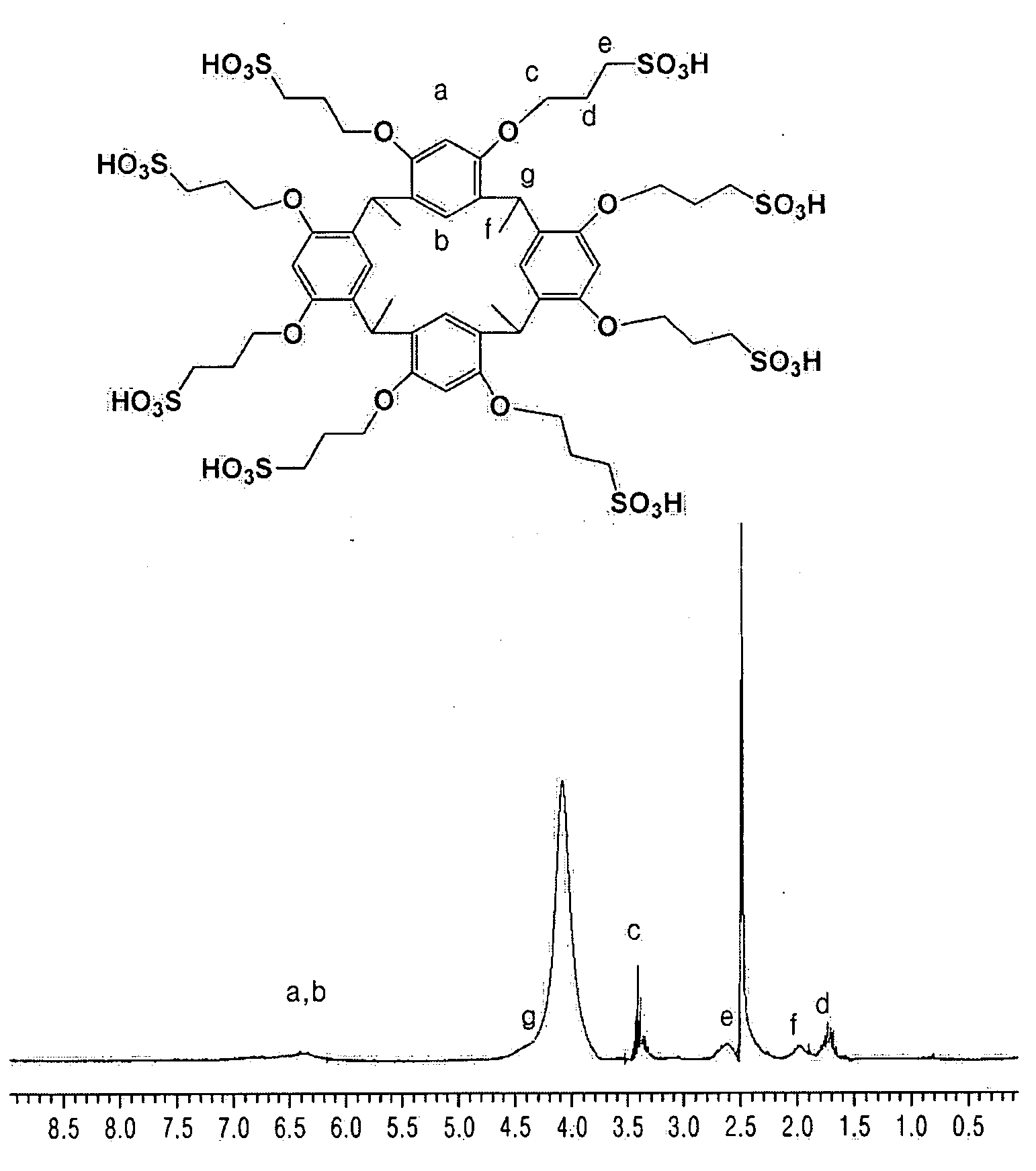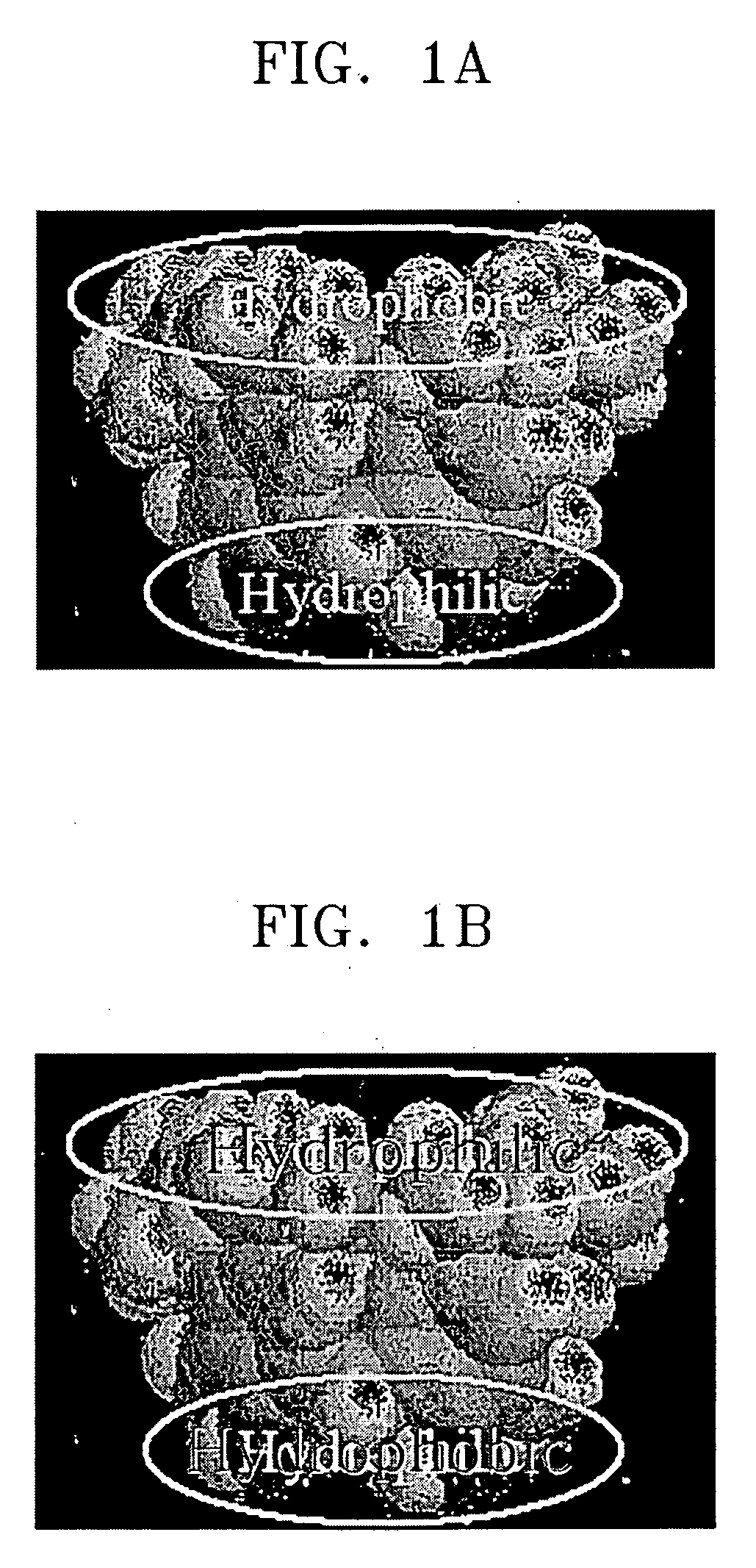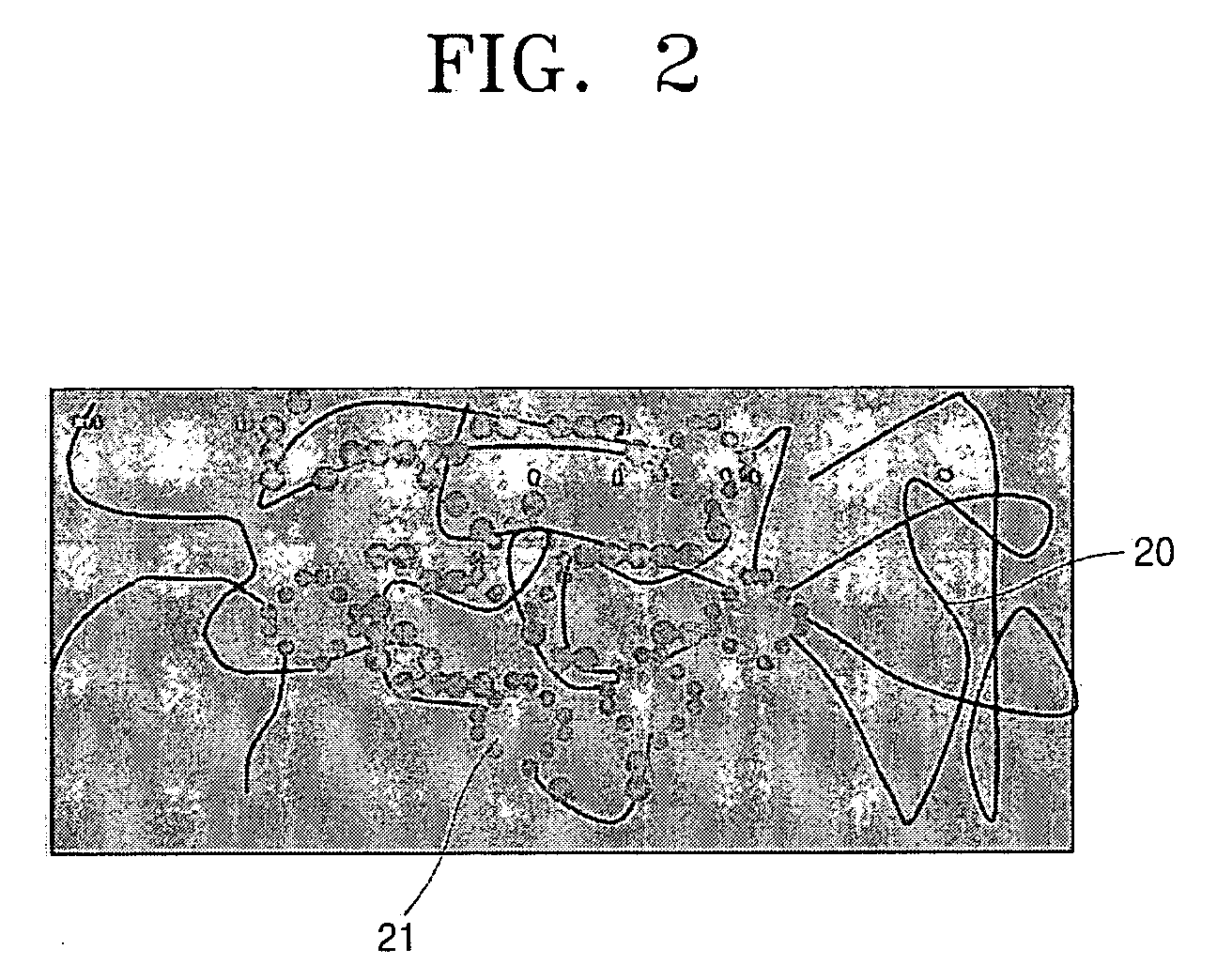Solid acid, polymer electrolyte membrane including the same, and fuel cell using the polymer electrolyte membrane
a polymer electrolyte membrane and fuel cell technology, applied in the direction of non-aqueous electrolyte cells, cell components, electrochemical generators, etc., can solve the problems of significant decline in the performance of fuel cells and depletion of electric potential, and achieve low methanol crossover, high efficiency, and high ionic conductivity
- Summary
- Abstract
- Description
- Claims
- Application Information
AI Technical Summary
Benefits of technology
Problems solved by technology
Method used
Image
Examples
synthesis example 1
Preparing a Compound in Formula 7
[0076] 33.03 g (0.3 mol) of resorcinol (compound A) and 13.22 g (16.8 ml, 0.3 mol) of acetaldehyde were dissolved in 300 ml of a 50 vol % aqueous ethanol solution and the result was heated to 75° C. 75 ml of concentrated hydrochloric acid was slowly added to the resulting mixture and the reaction was maintained at 75° C. for 1 hour. The resultant mixture was cooled with ice water and a precipitate was filtered through a glass filter. The filtered solution was evaporated and then the precipitate was separated again. The precipitate was recrystallized using a 50 vol % aqueous ethanol solution to obtain 30.11 g of a calix[4]resorcinarene compound (yield: 74.1%). The structure of the calix[4]resorcinarene compound was identified through Nuclear Magnetic Resonance (NMR) analysis, the results of which are illustrated in FIG. 3.
[0077] 3.0 g (5.5 mmol) of the calix[4]resorcinarene compound was dissolved in 60 ml of anhydrous THF, and then 1.164 g (48.5 mmo...
synthesis example 2
Preparing a Compound in Formula 8
[0079] Under a nitrogen atmosphere, 20 g (94.7 mmol) of 5-Nitroisophthalic acid (compound C) was dissolved in 100 ml of thionyl chloride to which 5 drops of pyridine were added, and the result was stirred at room temperature for 2 hours, and was refluxed for 6 hours. Then, excessive thionyl chloride was removed under reduced pressure to obtain a yellow mixture, and the result was cooled with ice water. Anhydrous hexane was added to the yellow mixture to obtain a white precipitate, and the white precipitate was filtered and dried under reduced pressure to obtain 22.3 g (yield: 95%) of 2-Nitroterephthaloyl chloride (D), a white solid compound.
[0080] 16.0 g (0.064 mol) of 2-Nitroterephthaloyl chloride (D) was dissolved in 140 ml of anhydrous benzene and 25.9 g (0.194 mol) of anhydrous AlCl3 was added thereto under a nitrogen atmosphere. The result was left to sit at room temperature for 1 hour. Then, the result was stirred for 1 hour and then left to ...
synthesis example 3
Preparing Sulfonated poly(ether ether ketone) 1 (SPEEK1) (m1=0.8, n1=0.2, and Mn=approx. 50,000) in Formula 11
[0084] 10.812 g (47.36 mmol) of the compound (J), 8.267 g (37.88 mmol) of the compound (K), and 4.0 g (9.47 mmol) of the compound (L) and 8.5 g of anhydrous K2CO3 were put in a 250 mL, 3-neck round flask in which a Dean-Stark trap was installed, and 120 ml of dimethylsulfoxide (DMSO) and 60 ml of toluene were mixed as a solvent and added to the flask.
[0085] The mixture was refluxed at 140° C. for 4 hours under a nitrogen atmosphere to remove generated water, and toluene was removed. The temperature was raised to 180° C. to perform polymerization for 16 hours. After cooling to room temperature, the product was precipitated in methanol, and the precipitated copolymer was washed with hot water 3 times to remove inorganic materials. The formed copolymer was dried at 100° C. for 24 hours.
[0086] The copolymer (sodium salt type) was dissolved in dimethylsulfoxide (DMSO) and dilu...
PUM
| Property | Measurement | Unit |
|---|---|---|
| temperature | aaaaa | aaaaa |
| temperature | aaaaa | aaaaa |
| temperature | aaaaa | aaaaa |
Abstract
Description
Claims
Application Information
 Login to View More
Login to View More - R&D
- Intellectual Property
- Life Sciences
- Materials
- Tech Scout
- Unparalleled Data Quality
- Higher Quality Content
- 60% Fewer Hallucinations
Browse by: Latest US Patents, China's latest patents, Technical Efficacy Thesaurus, Application Domain, Technology Topic, Popular Technical Reports.
© 2025 PatSnap. All rights reserved.Legal|Privacy policy|Modern Slavery Act Transparency Statement|Sitemap|About US| Contact US: help@patsnap.com



